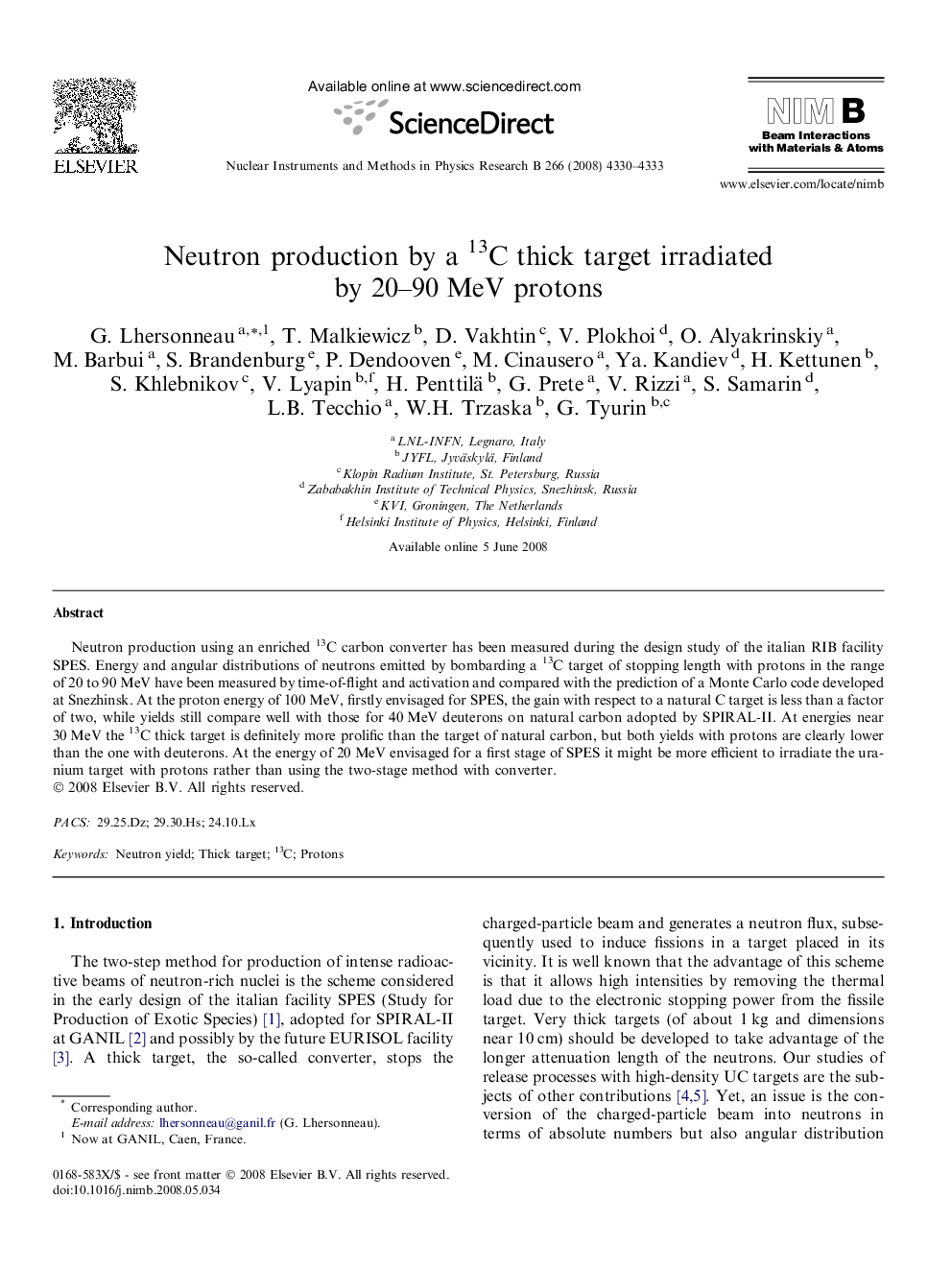| Article ID | Journal | Published Year | Pages | File Type |
|---|---|---|---|---|
| 1687460 | Nuclear Instruments and Methods in Physics Research Section B: Beam Interactions with Materials and Atoms | 2008 | 4 Pages |
Abstract
Neutron production using an enriched 13C carbon converter has been measured during the design study of the italian RIB facility SPES. Energy and angular distributions of neutrons emitted by bombarding a 13C target of stopping length with protons in the range of 20 to 90Â MeV have been measured by time-of-flight and activation and compared with the prediction of a Monte Carlo code developed at Snezhinsk. At the proton energy of 100Â MeV, firstly envisaged for SPES, the gain with respect to a natural C target is less than a factor of two, while yields still compare well with those for 40Â MeV deuterons on natural carbon adopted by SPIRAL-II. At energies near 30Â MeV the 13C thick target is definitely more prolific than the target of natural carbon, but both yields with protons are clearly lower than the one with deuterons. At the energy of 20Â MeV envisaged for a first stage of SPES it might be more efficient to irradiate the uranium target with protons rather than using the two-stage method with converter.
Related Topics
Physical Sciences and Engineering
Materials Science
Surfaces, Coatings and Films
Authors
G. Lhersonneau, T. Malkiewicz, D. Vakhtin, V. Plokhoi, O. Alyakrinskiy, M. Barbui, S. Brandenburg, P. Dendooven, M. Cinausero, Ya. Kandiev, H. Kettunen, S. Khlebnikov, V. Lyapin, H. Penttilä, G. Prete, V. Rizzi, S. Samarin, L.B. Tecchio, G. Tyurin,
